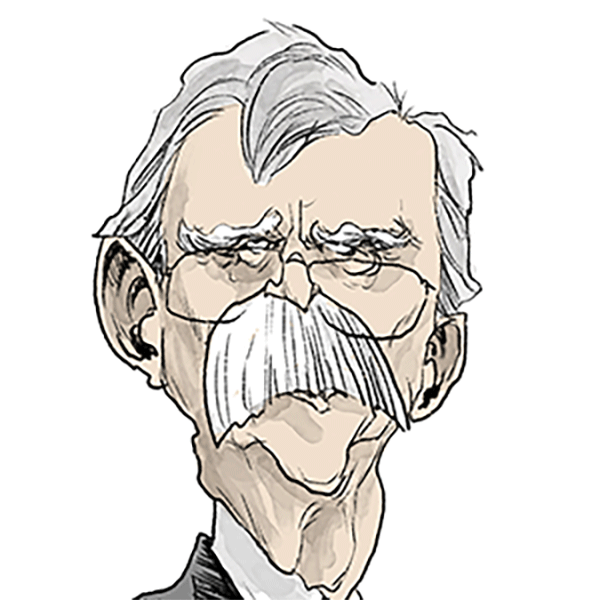Adrian Wooldridge: What if the US isn't the world's most innovative country?
Published in Op Eds
One of the barriers to understanding the world is our fixation on sports thinking: Who is winning and who is catching up? This has long been true of politics — we focus obsessively on the race for the White House while ignoring the debt mountain that may bring the whole system crashing down. It is also becoming true of business. We tend to look at the race for number one without thinking more generally about what being in the lead, in this industry or that niche, means.
Looked at through this sports prism, the innovation landscape is simple. The U.S. is still far ahead. America is responsible for almost all the breakthrough technologies that define the current era (AI, smart phones, social networks) just as it was responsible for all the breakthrough technologies that defined the last era (PCs, the internet, semiconductors). Three of the world’s most consequential AI companies — OpenAI Inc., Anthropic PBC and Databricks Inc. — are headquartered within two miles of each other in San Francisco. Nvidia Corp. is so dominant in the market for high-end chips that one commentator remarks that “there’s a war going on in AI out there, and Nvidia is the only arms dealer.”
Yet China is breathing down America’s neck — and in some areas, such as surveillance and hypersonic rockets, it’s taking the lead. The most cited paper on AI, known as the ResNet paper, was written by four Chinese scholars who have never studied outside the country. More than 1,300 foreign companies have opened advanced scientific research labs in China to tap into the country’s growing talent pool. And Europe? The combined value of all the tech companies on the continent is far less than the value of just one U.S. company, Microsoft Corp.
But what happens if we go beyond the sports metaphor? A new book by Mehran Gul, of the World Economic Forum, "The New Geography of Innovation," suggests that the picture is much more interesting. There are, in fact, lots of different innovation races with different end points and different measures of success. The U.S. might be good at breakthrough innovation in the private sector. But what about incremental innovation in the public sector? Feed in different measures, and you get different results.
If you focus on the dissemination of new ideas rather than their invention, China is arguably well ahead of the U.S. It is well documented that China excels as a fast follower thanks to its combination of engineering prowess and work ethic. China has twice as many miles of high-speed rail than any other country. BYD Co. Ltd sold nearly 607,000 EVs in the second quarter of this year compared with Tesla’s 384,000. SZ DJI Technology Co. Ltd sells more commercial drones than everyone else combined.
But today the country is doing something more exciting — taking ideas that exist in laboratories and commercializing them before anybody else. Beijing and Shanghai have hundreds of driverless taxis roaming the streets. Giant companies such as Alibaba Group Holding Ltd. and Baidu Inc. are best understood as innovation-and-execution machines. If America still leads the world in inventing the future, China leads in bringing it to life.
But focus on the public sector rather than the private sector, and a different innovation champion emerges: Singapore. Most countries count themselves as winners in the government-reform stakes if they can digitalize regular government functions. The government of Singapore conducts all its interactions with its citizens online but goes much further than this. It uses sensors in the streets to monitor and direct the flow of traffic, drones to survey areas affected by the outbreak of disease, and motion sensors in public housing to monitor the wellbeing of the elderly.
The government has a collective brain — the Smart Nation and Digital Government Group (SNDGG) — that attracts the country’s most brilliant citizens and regards itself as a public-sector equivalent of Google. If most countries contract out high-tech operations to the private sector, Singapore keeps them in-house to develop unique competences; if most governments play catch up, SNDGG acts as a pace setter. Private sector-obsessed Americans might be inclined to treat Singapore’s excellence at government as a mere side-show to the real innovation race. But when the great political theorist Thomas Hobbes asked himself what it was that prevented life from being solitary, poor, nasty, brutish and short, he answered that it was the state, or Leviathan, rather than the East India Company.
Gul even offers some words about what is increasingly regarded as the left-behind continent of Europe. Germany excels in what might be called “deep” or “incremental” innovation: Its strength lies in middle-sized companies — the celebrated mittelstand — that produce highly specialized products and focus all their energies on making sure they are the best in the world. These companies, which are usually hidden away in small towns, are so focused on engineering excellence that they have little time for PR: Herrenknecht AG is easily the world’s most impressive tunneling company but has only attracted a fraction of the attention of Elon Musk’s cleverly-named The Boring Company.
Switzerland, where Gul lives, combines a similar enthusiasm for mittelstand companies with a genius for big public projects such as the Swiss railway system, surely one of the wonders of the world, the Large Hadron Collider, and CERN (the European Organization for Nuclear Research). Thanks to CERN, the world’s first web site was not a dot-com or a dot-net but a dot-ch, which stands for Confederatio Helvetica, Switzerland’s Latin name.
Can the case for Europe be extended any further than a few isolated areas of excellence? The classic argument for the European model is that it is much more sustainable than the American one — that it pays attention to things like sustainability and quality of life not just to billion-dollar exits. What is the point of leading the world in AI if that AI is used to sell more cat food or get more clicks on cat videos? Some of these questions are even beginning to trouble people at the very heart of U.S. tech: A recent book by Alex Karp, the chief executive officer of Palantir and Nicholas Zamiska, the company's legal counsel, The Technological Republic, argues that the U.S. innovation machine has focused too much on fripperies like delivery Apps and not enough on big ideas that will transform society.
The problem with Europe’s civilization-first approach is not that it’s ill-conceived, it’s that Europe’s failure to create world-changing companies that embody its values means it gets treated as irrelevant on the world stage. Gul is undoubtedly right that we need to measure innovation against a lot of different metrics, not just market capitalization. But sometimes you must be seen to be a winner in the global marketplace to carry any real influence.
____
This column reflects the personal views of the author and does not necessarily reflect the opinion of the editorial board or Bloomberg LP and its owners.
Adrian Wooldridge is the global business columnist for Bloomberg Opinion. A former writer at the Economist, he is author of “The Aristocracy of Talent: How Meritocracy Made the Modern World.”
©2025 Bloomberg L.P. Visit bloomberg.com/opinion. Distributed by Tribune Content Agency, LLC.

























































Comments